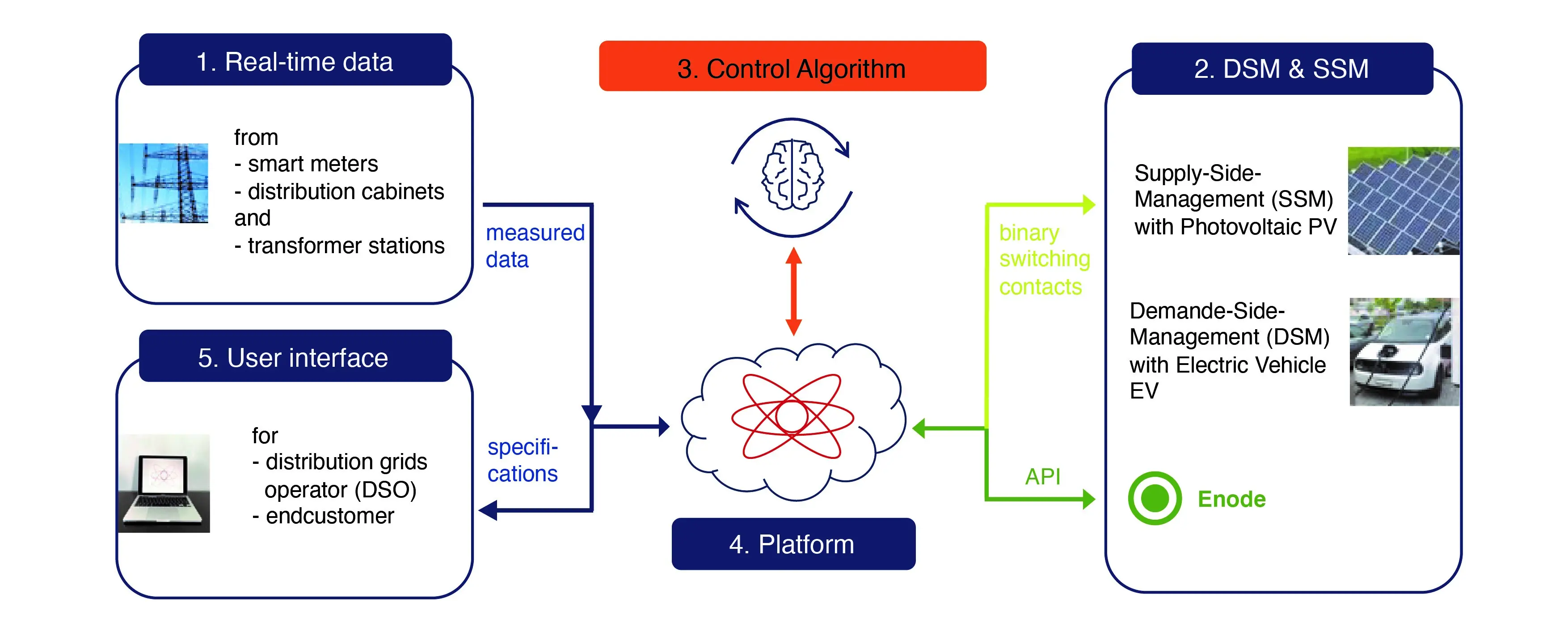Resilient power grid
With the ‘GridResilience’ project, the Institute of Energy Systems and Fluid Engineering (IEFE) at the ZHAW School of Engineering is breaking new ground to make the electricity grid fit for the energy transition in a cost-effective way. Instead of investing in expensive copper cables, grid operators should make greater use of the data available from measuring devices and use it to intelligently coordinate decentralised generation plants and consumers. To this end, networked platforms collect the relevant data with the help of a control algorithm, evaluate it and switch consumers on or off in such a way that the load on the grid is minimised.

Today's distribution grid faces growing challenges from renewable, decentralized electricity generation and the electrification of mobility and heat. In order to prevent the distribution grid from becoming the bottleneck of the federal government's net zero and energy strategy, the operator of the distribution grid (DSO) is increasingly forced to strengthen and expand its grid locally. In the search for a smarter and cheaper alternative, IEFE, EKZ, Swistec Systems AG and Supercomputing Systems AG have joined forces. We believe that in order to manage the changing loads and to avoid critical situations and failures, new and innovative products are required.
The basic idea of the research project is not only to expand the grid, but above all to utilise the existing technology better. To this end, the data from the smart meters installed in the electricity grid and all other available measuring devices, the distribution grids and the transformer stations will be brought together on a networked platform in the cloud. At the same time, data from consumers (electric cars, boilers, heat pumps, etc.) and decentralised power generation systems (PV systems) are recorded. In addition, both grid operators and end customers have the option of storing their requirements on the platform. All data is evaluated with the help of a control algorithm and consumers are switched on or off in such a way that the load on the grid is minimised. Thanks to this flexible and intelligent system, the electricity grid can be stabilised locally and ‘virtually’ reinforced without the need for expensive extensions to the copper lines.
The centrepiece of the project is the control algorithm and the consolidation of all available data. This should no longer control the process according to predetermined rules, but flexibly and thus be able to react to different situations with the help of real-time data. To do this, the system must constantly incorporate new information and work with different types of data that do not always arrive at the same time. Some signals are continuous, i.e. they are constantly changing (like a continuously variable controller). Others are discontinuous, i.e. zero or one (like a light switch). The entire networking takes place in the cloud and integrates both special programming interfaces (APIs) and simple on/off switches (binary switching contacts).
In order to successfully implement such a system on the market and operate it economically in the long term, a certain size is required. This is to be achieved through the commitment of the companies Swistec Systems AG and Supercomputing Systems AG with all their customers, initially with the EKZ as a pilot customer in the test phase.
The ‘GridResilience’ project is being realised by the IEFE together with Elektrizitätswerke des Kantons Zürich EKZ, Swistec Systems AG and Supercomputing Systems AG.
Project name:
GridResilience: Strengthening Distribution Grids through Decentralized Flexibility Optimization from Electric Vehicles and Photovoltaic Inverters
Project team
Artjoms Obusevs, Petr Korba
Project partners
Elektrizitätswerke des Kantons Zürich EKZ, Swistec Systems AG and Supercomputing Systems AG
Funding Partner
Innosuisse, Bern
Project duration
September 2024 till May 2026